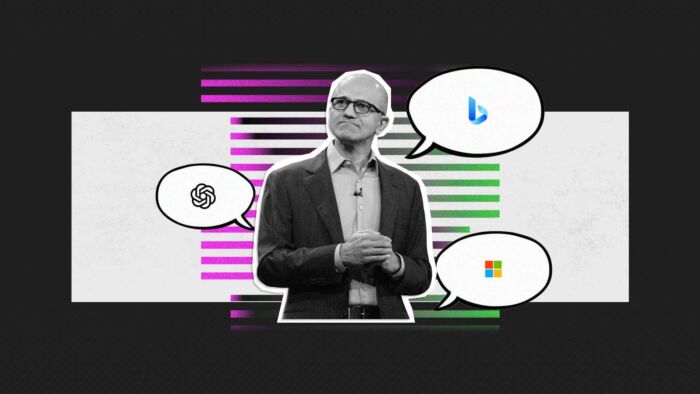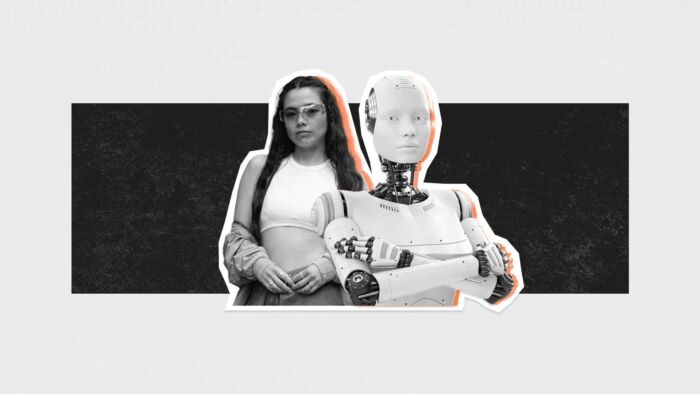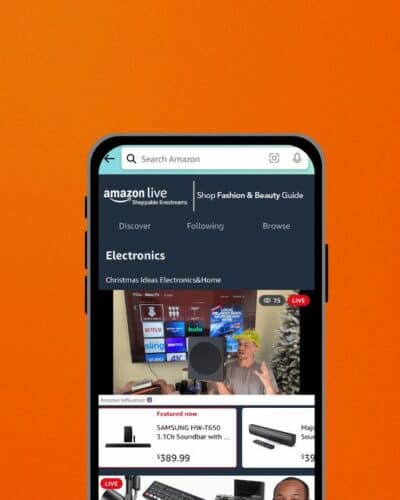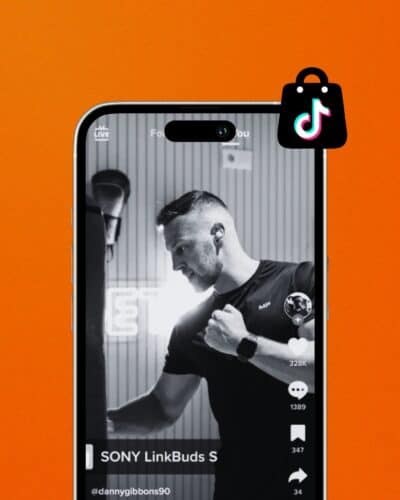AI has been dominating the headlines this year. ChatGPT, DALL-E and other generative-AI tools have been praised, scrutinized, and widely discussed, and it seems everyone has an opinion around whether they’re something to be welcomed or feared.
With this in mind, it’s worth considering how AI advertising is evolving, and why we, as marketers, brands and agencies, should pay close attention to this rapidly-scaling technology.

Contents
Current state of AI advertising in 2023
7 ways AI is changing advertising
Why brands should take note of AI developments
Potential challenges to AI advertising
Examples of successful AI advertising campaigns
What is AI advertising?
AI advertising uses artificial intelligence technologies to make automated decisions based on data collection, data analysis, and observations of audience or economic trends that may impact marketing efforts. In marketing, AI is often used where speed or efficiency is prioritized, and to build a deeper understanding or relationship with consumers.
AI tools can use whatever data they collect (through algorithms) and communicate using targeted messages at the right point of contact without wasting time, and without the need for a manual operator to trigger the response.
AI advertising is a responsive and effective method for dealing with your customers whilst ensuring the user experience is valued. In other areas, AI marketing covers data analysis, media buying, content generation, natural language processing, automated decision-making and real-time personalization.
Current State of AI Advertising in 2023
In 2023, AI has already started to have a significant impact over the marketing sector. Marketers are finding ways to improve targeting, personalization, and automate their marketing processes.
AI is becoming more prevalent across the marketing sector, that’s for sure. Generative-AI is very much an integral part of the here, now and beyond. Take ChatGPT for example, this chatbot has seen a dramatic surge in popularity since the start of 2023, and now is one of the most widely used tools across the industry, helping marketers with their copy, coding, spelling, grammar, and pretty much every text-based query you can think of.
We’ve got TikTok, YouTube Shorts and Instagram Reels that are running entirely upon AI algorithms, which collect our data, behaviors and preferences to feed us the content we like best.
7 ways AI is changing advertising
1. Personalization allowing for better customer experiences
AI is making it simpler to personalize content, offers and messaging for each individual customer based on their needs and behaviors. By analyzing consumer data, AI algorithms can suggest tailored product recommendations, email subject lines, and suggest content that users are more likely to engage with.
2. Real time ad optimization
AI can monitor and analyze marketing advertising campaigns in real-time, issuing updates to improve their performance. This can include optimizing bids, changing targeting parameters, and adjusting the ad creatives.
3. Content creation
AI-tools, like ChatGPT for example, can generate content, whether that be blog posts, social posts or product descriptions.
4. Predictive analytics for campaign planning and forecasting
AI can study data sets that enable marketers to better understand customer behavior. Through predictive analytics marketers can create targeted campaigns that have a better chance at converting.
5. Fraud detection
It’s common for AI to be used to filter out or detect fraudulent activity such as click fraud or incoming traffic populated by bots. These AI operating systems can take the appropriate actions to prevent determined fraudulent activity,
6. Chatbots and virtual assistants for customer interaction and support
Chatbots powered by AI algorithms can provide personalized service at scale. These language bots can help answer customer inquiries and provide product recommendations freeing up time for marketers to focus elsewhere.
7. Improved ad relevance and engagement metrics
AI algorithms are tasked with analyzing vast amounts of data for each individual consumer. This can include their browsing behavior, search history, and demographic information. These data sets are used to create personalized campaigns that relate better to the audience’s interests.
Through data collection, AI can help improve engagement metrics by better understanding what exactly an audience’s preferences are, keeping them engaged for longer.

The Future of AI Advertising
The future of AI advertising is exciting, and we can expect to see continued innovation and growth in the coming years. Here are some of The Goat Agency’s predictions:
More advanced personalization
As AI algorithms become more sophisticated and can process larger amounts of data, we can expect to see even more advanced personalization in advertising. Ads will become even more tailored to individual users’ preferences and interests, increasing their effectiveness.
Increased use of voice search and assistants:
As more consumers use voice-activated assistants like Siri or Alexa, we can expect to see AI-powered advertising that takes advantage of this trend. Advertisers will need to create ad campaigns optimized for voice search and assistants, including using natural language processing to understand and respond to user queries.
More AI-powered chatbots
Chatbots are becoming more prevalent in customer service and support, and we can expect to see more AI-powered chatbots used for advertising purposes. These chatbots can engage with customers, answer their questions, and provide personalized recommendations based on their preferences.
Greater use of augmented reality (AR) and virtual reality (VR)
AR and VR technology is advancing rapidly, and at scale. We can expect to see more AI-powered advertising that incorporates these technologies. Advertisers will be able to create more immersive and interactive ad experiences that provide a more engaging and memorable experience for users.
Continued focus on data privacy
With increasing concerns around data privacy and security, advertisers will need to ensure that their AI-powered ad campaigns are transparent and compliant with regulations. Consumers will demand more control over their personal data, and advertisers will need to find new ways to create effective ad campaigns while respecting user privacy.
Will AI take over advertising?
AI is already playing a significant role in advertising, but it is unlikely to take over completely. While AI can automate many aspects of advertising, such as targeting, optimization, and campaign management, there are still important aspects of advertising that require human input and creativity.
AI algorithms are designed to analyze data, find patterns, and optimize performance, but they cannot replace the human touch in areas like branding, messaging, and creative design. These aspects of advertising require a human touch to create compelling and memorable campaigns that resonate with consumers and build long-term brand loyalty.
Moreover, AI is a tool that requires human oversight to ensure that it is being used ethically and effectively. Human judgment and decision-making are still necessary to create successful advertising campaigns and ensure that they align with the brand’s values and goals.
Therefore, it is more likely that AI will continue to be integrated into advertising as a tool that works alongside human professionals rather than taking over completely. AI will enable marketers to work more efficiently and effectively, creating more targeted and personalized campaigns that deliver better results for businesses and consumers alike.
Why should brands take note of developments in AI Advertising?
AI is constantly evolving and developing its understanding of our behavior as consumers. If your competitors are using AI for any marketing capacity, it is likely that they have a better understanding of who they’re targeting, what their interests and behaviors are, and can deliver more personalized content as a result.
In just a few years, AI models have been subject to large scale developments that have subsequently become the new norm for marketers. It is integral to keep an eye on upcoming developments to ensure that you’re not being left behind, conducting outdated practices or missing the latest trends.
Potential Challenges to AI Advertising
As with any technology, AI advertising also comes with its own set of challenges. Here are some of the key challenges of AI advertising:
Advertising Bias
AI algorithms can be biased based on the data used to train them, which can lead to unfair or discriminatory advertising practices.
Privacy
With AI’s ability to collect and analyze vast amounts of data, there are growing concerns around data privacy and how companies use this data to target individuals.
Lack of human creativity
AI has a tendency to come across quite dry, and robotic. Sometimes a human-touch is most effective, especially when generating content.
Legal & regulatory challenges
There are currently few regulations around AI advertising, which can create challenges around transparency, accountability, and ethical considerations. Just look at Getty Images lawsuit against generative-AI tools as an example.

Examples of Successful AI Advertising Campaigns
Spotify’s AI-Powered Billboards
Spotify created AI-powered billboards that used real-time data to display humorous and relevant messages to passersby. The billboards used data such as the time of day, weather, and location to create personalized messages that viewers could engage with.
The ‘Love What You Love,’ campaign showcased across eight global markets, highlighting personalized and curated playlists, featuring artists such as Demi Lovato, Luke Bryan and Montell Jordan and the user experience.
Coca-Cola’s AI-Powered Vending Machines
Coca-Cola created AI-powered vending machines that could interact with customers using facial recognition technology. The vending machine could identify the customer’s age and gender and suggest products based on their preferences.
This is another great example of how AI can analyze a dataset to provide a personalized experience for the consumer.
It can be argued that AI is still in its infancy, especially within the marketing sector. However, its integration into our everyday tasks is scaling rapidly. AI has enabled brands to better identify their consumers, understand their preferences, and generate more personalized experiences based on data analysis – all while slashing the time it takes to complete such tasks into tenths.
AI does present challenges, such as concerns surrounding privacy and exploitation of consumer data, which can be put down to the technology’s somewhat toddler stage. Developments are constantly churned out, and once the tech assumes a higher stake in mainstream channels it is only a matter of time before some of the concerns are ironed out.
To learn more about AI and how it impacts advertising, check out our coverage of ChatGPT and how it is the genesis of artificial intelligence.





